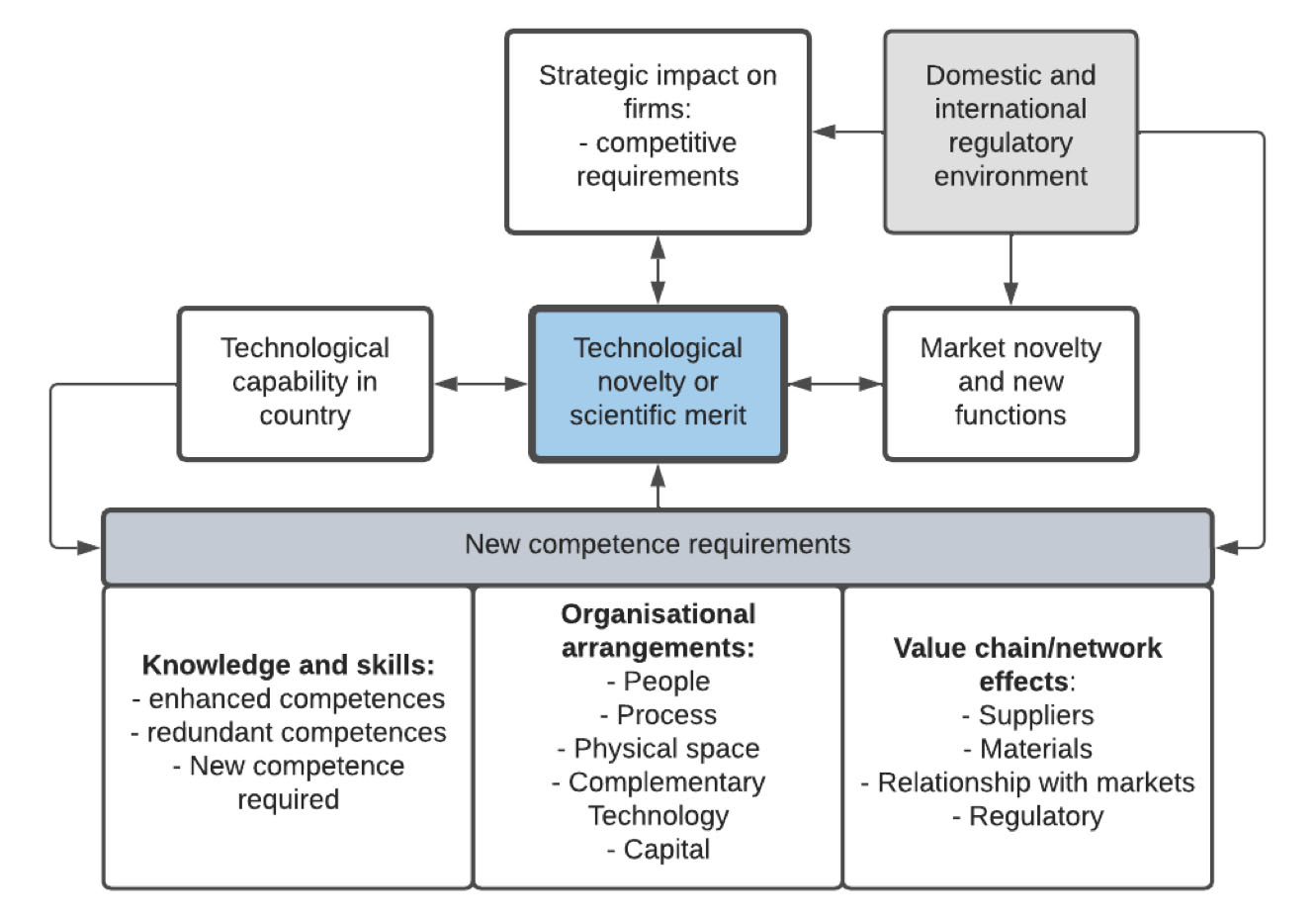BY DR SHAWN CUNNINGHAM
2 SEPTEMBER 2022
Often when we try to promote technological learning and innovation, we find that people in government and industry focus narrowly on physical technologies in the form of things, machines, software code or processes. Few workplaces pay attention to the many social technologies needed to rearrange or adapt workplaces around new technological capabilities. Furthermore, different stakeholders have little open dialogue about how the gaps can be closed between industries and technological and educational institutions, or how to establish missing technological infrastructure.
Most industry actors concentrate on the slow process of technological change within their industry, rather than on the potential disruptions posed by technological developments beyond their industry. One explanation for this blind spot is that it is hard to imagine how the current technological features of the emerging technologies developed elsewhere could unfold or spill over into existing market structures.
At the Technological Change and Innovation System Observatory, we assist stakeholders from business, academia and the dtic to imagine how the possibilities of technologies may unfold. This is one way to build distributed technological intelligence between different stakeholders. We start with the technologies tracked by organisations such as the World Economic Forum, UNIDO or the South African Government. Then, we explore how the characteristics of technologies are enabled by the technological ecosystem, and how the technology itself may disseminate. These insights are then captured in a Technological Change Profile. While each profile must cover the basics of what the technology is about, the focus is on the social technologies and innovations needed to harness their physical technological capabilities. The profiles aim to help leadership teams better anticipate how their organisation can embrace technological change. For instance, in each profile we explore the:
- Competence requirements: What will make this technology work effectively in the organisational context? What new knowledge, additional skills, organisational arrangements, capital, supplier networks, additional technologies, and infrastructure need to be secured?
- Market effect: What does this new technological capability mean for markets? What expected new functions/features are being offered to the market?
- Strategic impact on the competitive position of the organisation: How will this ability influence the organisation's position, and what will it take to continue innovation if others follow? How will the changes we make trigger change in other organisations?
- Supporting technological capability in the ecosystem: Who can we rely on for technical assistance, problem-solving, testing, or other technological support? Where can we find hidden or deep expertise that we can leverage?
- Anticipated regulatory adjustments: Which regulations will be required, or will already have changed elsewhere and will most likely have effects here at some point? Can we support dialogue about how regulations would have to change based on experiences in other countries and our local context?

By exploring these dimensions, leadership teams can grapple with the potential effects and explore possible routes as well as better track technological developments that appear now to be distant.
When building technological awareness, stakeholders must be reminded not to get distracted by the features of the technology itself but rather explore the effects on organisational capabilities, market structures and the other social innovations needed to make the technology easier to understand and adopt. Because it is hard to imagine how some of the more abstract technologies like artificial intelligence or cloud-based computing might affect companies, more emphasis should be placed on technology demonstration and making learning-by-doing easier for businesses and public officials.
Adopting any emergent technologies is like learning a new language or becoming part of a new culture. Many emergent technologies are interconnected, so when new technologies are mastered, additional combinations become possible. Because of the convergence of many digital technologies, a change in the production process of a company will most likely affect many other areas of the business as well, and it might also affect clients, suppliers and other service providers. Therefore, technological upgrading is no longer a project or something done every now and then. In addition, what is described as “emerging” changes constantly. What is emerging in one sector may already be old news in another sector.
Because of the increased interconnectedness of technological domains, a small improvement in one area, for instance, in the battery life of handheld equipment, might have many ripple effects elsewhere in companies, markets and societies. Therefore, industries and government programmes must also build their shared technological intelligence. The more people looking out for technological change and innovation opportunities, the better.
Of particular importance in strengthening the technological intelligence of a company or industry is improving the ability of leadership teams to sense and act on the required internal adjustments while at the same time being aware of, and responsive to, changes in the external environment. At the same time, management teams must pay attention to required changes in the configuration and arrangements of both physical and social technologies.
The technology profile structure (see graphic above) can also be used in a workshop setting with different stakeholders from an industry or a technology domain where the profile dimensions can be explored collectively. For instance, we have used the profile with business leaders from an industry organisation wanting to increase their collective response to technological possibilities. We have also used these headings as a guide for interviews with technology experts and managers of research laboratories or technology centres.
One interesting side-effect of developing these profiles is that we are discovering previously hidden or hard-to-access technological capabilities in research programmes, training courses or even in private companies. As we develop each profile, we are making new connections between sector associations, research organisations, technology extension centres and companies.
The profiles are on the TIPS Technological Change and Innovation System Observatory website at https://www.tips.org.za/projects/technological-change-and-innovation-system-observatory/profiles



